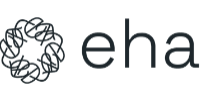EARLY CLINICAL ACTIVITY AND PHARMACODYNAMIC EFFECTS OF DUVELISIB, A PI3K-DELTA,GAMMA INHIBITOR, IN PATIENTS WITH TREATMENT-NA
(Abstract release date: 05/21/15)
EHA Library. O'Brien S. 06/13/15; 103207; S434

Dr. Susan O'Brien
Contributions
Contributions
Abstract
Abstract: S434
Type: Oral Presentation
Presentation during EHA20: From 13.06.2015 12:15 to 13.06.2015 12:30
Location: Room A7
Background
Signaling via PI3K-δ and PI3K-γ has distinct and complementary effects on malignant B-cells and nonmalignant immune cells in chronic lymphocytic leukemia (CLL). Duvelisib, an oral dual inhibitor of PI3K-δ,γ, has shown clinical activity in a phase 1 study, IPI-145-02 (O’Brien, ASH 2014; Flinn, ASH 2014; Horwitz, ASH 2014).
Aims
The activity of duvelisib monotherapy in patients with treatment-naïve CLL from this study are reported here.
Methods
Following dose escalation, an expansion cohort of treatment-naïve CLL patients was enrolled (n=18). Response was based on iwCLL (2008) criteria. Safety included AEs and laboratory assessments. Pharmacodynamic assessments included peripheral blood (PB) flow cytometry for phospho-S473 AKT (pAKT) and Ki67, and measurement of serum chemokines and cytokines. Numbers of PB T-cell subsets were also monitored.
Results
As of Oct 2014, 18 treatment-naïve CLL pts received duvelisib 25 mg BID. The best ORR per iwCLL was 82% (PRs in 14/17 evaluable patients) with a median time on treatment of 53 weeks (range 8-69). Ten patients remain on treatment, while 8 discontinued, including 6 patients due to AEs. AEs overall were mostly Grade 1 or 2. The most common ≥ Grade 3 AEs were neutropenia (7/18) and ALT/AST increase (3/18). Inhibition of pAKT in CLL cells was rapid following a single dose and sustained through Cycle 2 Day 1 (C2D1). A reduction in the Ki67 proliferative fraction in both CLL and T-cells was also observed. Duvelisib resulted in reductions in the median serum levels of CCL3, CCL4, CCL17, CCL22, CXCL10, CXCL13, IL-10, IL-12p40, MMP-9, IL-16, and TNFα to ≤ 50% of baseline at C1D8 and/or C2D1 (p < 0.01).
Summary
Duvelisib 25 mg BID shows clinical activity in treatment-naïve CLL pts. The inhibition of pAKT and Ki67 in CLL cells suggests duvelisib inhibits the PI3K pathway and suppresses malignant cell proliferation in treatment-naive CLL patients. In addition, the effect of duvelisib on serum chemokines, cytokines, and T-cell proliferation suggests that modulation of the tumor microenvironment may contribute to the observed early clinical activity of duvelisib in patients with treatment-naïve CLL. These data support the further development of duvelisib in treatment-naïve CLL, including combinations with other targeted therapies.
Keyword(s): Chronic lymphocytic leukemia, Clinical data, Cytokine, PI3K
Session topic: CLL: Novel agents
Type: Oral Presentation
Presentation during EHA20: From 13.06.2015 12:15 to 13.06.2015 12:30
Location: Room A7
Background
Signaling via PI3K-δ and PI3K-γ has distinct and complementary effects on malignant B-cells and nonmalignant immune cells in chronic lymphocytic leukemia (CLL). Duvelisib, an oral dual inhibitor of PI3K-δ,γ, has shown clinical activity in a phase 1 study, IPI-145-02 (O’Brien, ASH 2014; Flinn, ASH 2014; Horwitz, ASH 2014).
Aims
The activity of duvelisib monotherapy in patients with treatment-naïve CLL from this study are reported here.
Methods
Following dose escalation, an expansion cohort of treatment-naïve CLL patients was enrolled (n=18). Response was based on iwCLL (2008) criteria. Safety included AEs and laboratory assessments. Pharmacodynamic assessments included peripheral blood (PB) flow cytometry for phospho-S473 AKT (pAKT) and Ki67, and measurement of serum chemokines and cytokines. Numbers of PB T-cell subsets were also monitored.
Results
As of Oct 2014, 18 treatment-naïve CLL pts received duvelisib 25 mg BID. The best ORR per iwCLL was 82% (PRs in 14/17 evaluable patients) with a median time on treatment of 53 weeks (range 8-69). Ten patients remain on treatment, while 8 discontinued, including 6 patients due to AEs. AEs overall were mostly Grade 1 or 2. The most common ≥ Grade 3 AEs were neutropenia (7/18) and ALT/AST increase (3/18). Inhibition of pAKT in CLL cells was rapid following a single dose and sustained through Cycle 2 Day 1 (C2D1). A reduction in the Ki67 proliferative fraction in both CLL and T-cells was also observed. Duvelisib resulted in reductions in the median serum levels of CCL3, CCL4, CCL17, CCL22, CXCL10, CXCL13, IL-10, IL-12p40, MMP-9, IL-16, and TNFα to ≤ 50% of baseline at C1D8 and/or C2D1 (p < 0.01).
Summary
Duvelisib 25 mg BID shows clinical activity in treatment-naïve CLL pts. The inhibition of pAKT and Ki67 in CLL cells suggests duvelisib inhibits the PI3K pathway and suppresses malignant cell proliferation in treatment-naive CLL patients. In addition, the effect of duvelisib on serum chemokines, cytokines, and T-cell proliferation suggests that modulation of the tumor microenvironment may contribute to the observed early clinical activity of duvelisib in patients with treatment-naïve CLL. These data support the further development of duvelisib in treatment-naïve CLL, including combinations with other targeted therapies.
Keyword(s): Chronic lymphocytic leukemia, Clinical data, Cytokine, PI3K
Session topic: CLL: Novel agents
Abstract: S434
Type: Oral Presentation
Presentation during EHA20: From 13.06.2015 12:15 to 13.06.2015 12:30
Location: Room A7
Background
Signaling via PI3K-δ and PI3K-γ has distinct and complementary effects on malignant B-cells and nonmalignant immune cells in chronic lymphocytic leukemia (CLL). Duvelisib, an oral dual inhibitor of PI3K-δ,γ, has shown clinical activity in a phase 1 study, IPI-145-02 (O’Brien, ASH 2014; Flinn, ASH 2014; Horwitz, ASH 2014).
Aims
The activity of duvelisib monotherapy in patients with treatment-naïve CLL from this study are reported here.
Methods
Following dose escalation, an expansion cohort of treatment-naïve CLL patients was enrolled (n=18). Response was based on iwCLL (2008) criteria. Safety included AEs and laboratory assessments. Pharmacodynamic assessments included peripheral blood (PB) flow cytometry for phospho-S473 AKT (pAKT) and Ki67, and measurement of serum chemokines and cytokines. Numbers of PB T-cell subsets were also monitored.
Results
As of Oct 2014, 18 treatment-naïve CLL pts received duvelisib 25 mg BID. The best ORR per iwCLL was 82% (PRs in 14/17 evaluable patients) with a median time on treatment of 53 weeks (range 8-69). Ten patients remain on treatment, while 8 discontinued, including 6 patients due to AEs. AEs overall were mostly Grade 1 or 2. The most common ≥ Grade 3 AEs were neutropenia (7/18) and ALT/AST increase (3/18). Inhibition of pAKT in CLL cells was rapid following a single dose and sustained through Cycle 2 Day 1 (C2D1). A reduction in the Ki67 proliferative fraction in both CLL and T-cells was also observed. Duvelisib resulted in reductions in the median serum levels of CCL3, CCL4, CCL17, CCL22, CXCL10, CXCL13, IL-10, IL-12p40, MMP-9, IL-16, and TNFα to ≤ 50% of baseline at C1D8 and/or C2D1 (p < 0.01).
Summary
Duvelisib 25 mg BID shows clinical activity in treatment-naïve CLL pts. The inhibition of pAKT and Ki67 in CLL cells suggests duvelisib inhibits the PI3K pathway and suppresses malignant cell proliferation in treatment-naive CLL patients. In addition, the effect of duvelisib on serum chemokines, cytokines, and T-cell proliferation suggests that modulation of the tumor microenvironment may contribute to the observed early clinical activity of duvelisib in patients with treatment-naïve CLL. These data support the further development of duvelisib in treatment-naïve CLL, including combinations with other targeted therapies.
Keyword(s): Chronic lymphocytic leukemia, Clinical data, Cytokine, PI3K
Session topic: CLL: Novel agents
Type: Oral Presentation
Presentation during EHA20: From 13.06.2015 12:15 to 13.06.2015 12:30
Location: Room A7
Background
Signaling via PI3K-δ and PI3K-γ has distinct and complementary effects on malignant B-cells and nonmalignant immune cells in chronic lymphocytic leukemia (CLL). Duvelisib, an oral dual inhibitor of PI3K-δ,γ, has shown clinical activity in a phase 1 study, IPI-145-02 (O’Brien, ASH 2014; Flinn, ASH 2014; Horwitz, ASH 2014).
Aims
The activity of duvelisib monotherapy in patients with treatment-naïve CLL from this study are reported here.
Methods
Following dose escalation, an expansion cohort of treatment-naïve CLL patients was enrolled (n=18). Response was based on iwCLL (2008) criteria. Safety included AEs and laboratory assessments. Pharmacodynamic assessments included peripheral blood (PB) flow cytometry for phospho-S473 AKT (pAKT) and Ki67, and measurement of serum chemokines and cytokines. Numbers of PB T-cell subsets were also monitored.
Results
As of Oct 2014, 18 treatment-naïve CLL pts received duvelisib 25 mg BID. The best ORR per iwCLL was 82% (PRs in 14/17 evaluable patients) with a median time on treatment of 53 weeks (range 8-69). Ten patients remain on treatment, while 8 discontinued, including 6 patients due to AEs. AEs overall were mostly Grade 1 or 2. The most common ≥ Grade 3 AEs were neutropenia (7/18) and ALT/AST increase (3/18). Inhibition of pAKT in CLL cells was rapid following a single dose and sustained through Cycle 2 Day 1 (C2D1). A reduction in the Ki67 proliferative fraction in both CLL and T-cells was also observed. Duvelisib resulted in reductions in the median serum levels of CCL3, CCL4, CCL17, CCL22, CXCL10, CXCL13, IL-10, IL-12p40, MMP-9, IL-16, and TNFα to ≤ 50% of baseline at C1D8 and/or C2D1 (p < 0.01).
Summary
Duvelisib 25 mg BID shows clinical activity in treatment-naïve CLL pts. The inhibition of pAKT and Ki67 in CLL cells suggests duvelisib inhibits the PI3K pathway and suppresses malignant cell proliferation in treatment-naive CLL patients. In addition, the effect of duvelisib on serum chemokines, cytokines, and T-cell proliferation suggests that modulation of the tumor microenvironment may contribute to the observed early clinical activity of duvelisib in patients with treatment-naïve CLL. These data support the further development of duvelisib in treatment-naïve CLL, including combinations with other targeted therapies.
Keyword(s): Chronic lymphocytic leukemia, Clinical data, Cytokine, PI3K
Session topic: CLL: Novel agents
{{ help_message }}
{{filter}}


